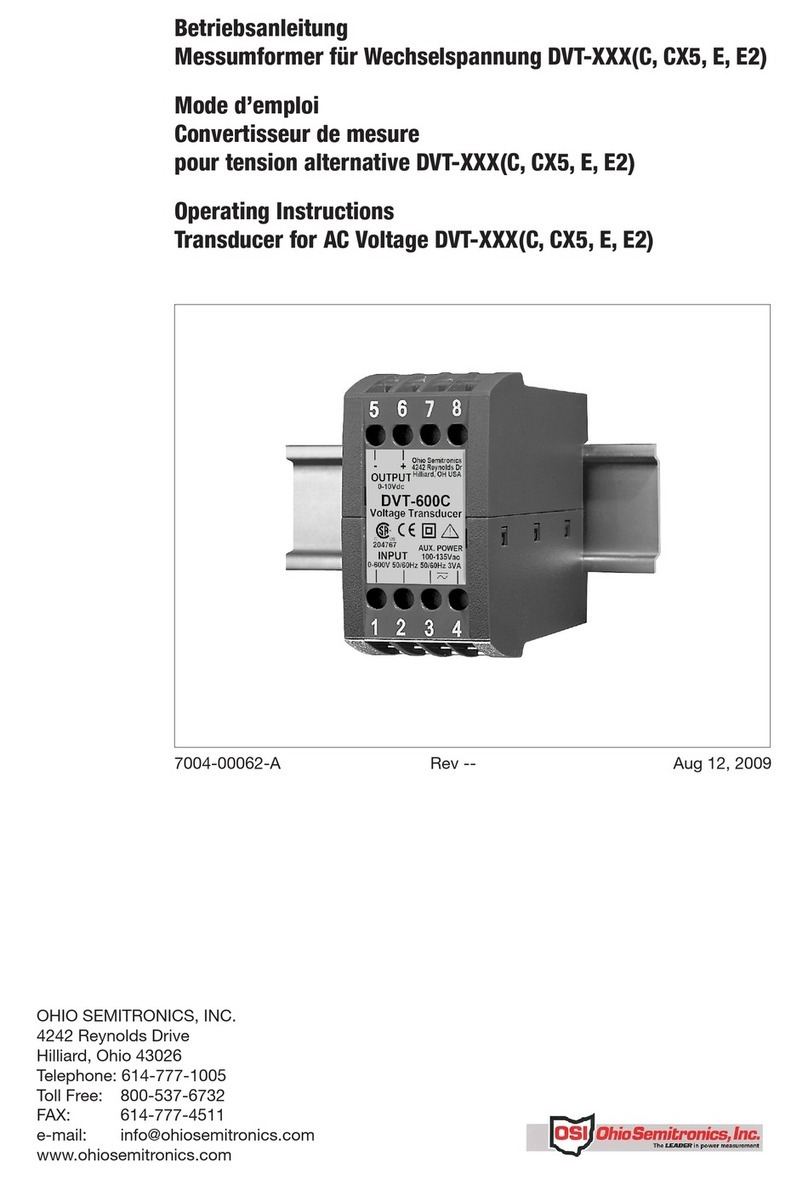
PC5 SERIES WATT TRANSDUCER CALIBRATION MANUAL Page 7
First Example: PC5-004B, 30/ 3W has
a specified output of 1mA
proportional to 1KW. Using the
single-phase calibration method, the
Wattmeter standard would be set at
500 watts full scale and the PC5
would be calibrated for a 1mA output
at the 500-watt point on the
wattmeter.
Second Example: PC5-007B, 30/ 4W
has a specified output of 1mA
proportional to 1.5KW. Using the
single-phase calibration method, the
Wattmeter standard would be set at
500 watts and the PC5-007B would
be set to 1 mA at the 500-watt point
on the Wattmeter standard. In each
case, each element of PC5-007B is
measuring the full-scale current &
voltage.
B A digital meter capable of 10-
microvolt resolution for the base watt
transducer with outputs of 50, 100, or
150 millivolts is required and digital
meter capable of 1-millivolt resolution
for all others.
C A precision load resistor of 1K Ω,
0.05% should be used for the 1mA-
output units, option A & B and a
precision resistor of 500 Ω, 0.05%
should be used for option E.
D If the full-scale line current required is
not available; amp-turns through the
current transformer or transducer
window may be used. The windings
must be distributed uniformly around
the current transformer or transducer
and not pulled tightly against the unit.
E If current transformers are not
calibrated with the PC5 the following
additional errors may be expected:
3% 50 and 100 ampere range.
1.5% 200 ampere range.
0.75% 400 & 600 ampere range.
0.3% 1000 ampere range and up.
F Apply power to all voltage potential
circuits for 20 minutes, (this includes
115 VAC instrument power if you
have PC5 with option B, D, or E)
before calibration is attempted.
G Calibration of the watt transducer
should be made at or as close to
unity power as possible.
H Calibration of all standard PC5 Watt
Transducers is scaled for standard
power levels such as 100, 500, 1000,
2000 Watts, etc. Refer to the PC5
specifications for the "Watts at Rated
Output".
9.2 ADJUSTMENTS
Overall calibration and zero adjustments are
located through the lid underneath the
plastic caps. If the lid has a black plastic
cap over the zero opening, do not remove,
this is not an adjustment. Balance
adjustments for 2, 2½, and 3 elements are
located inside the can. Refer to Figure 6 for
location.





























